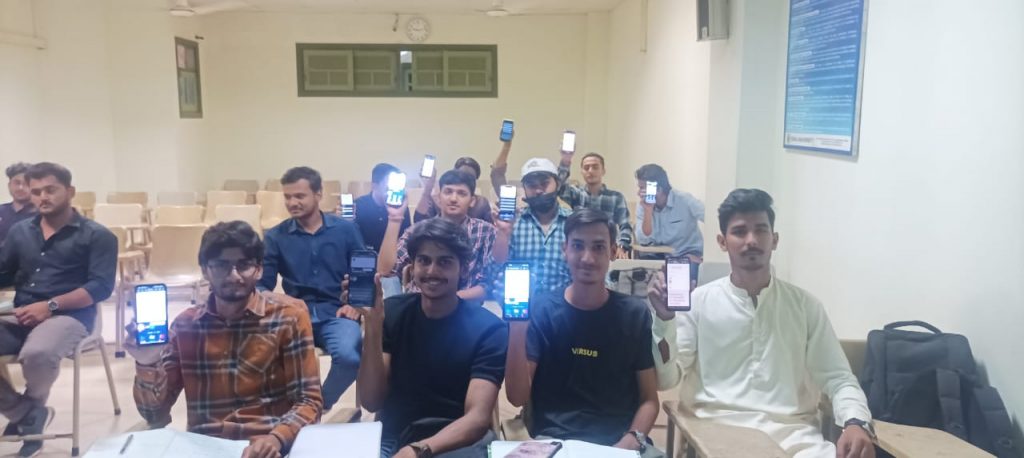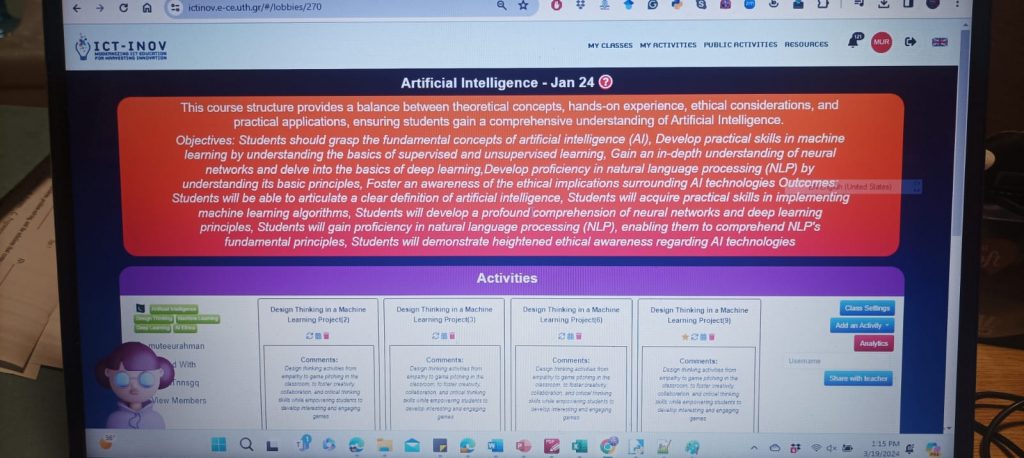
Description of the course
The course is an introduction to artificial intelligence (AI), machine, and deep learning concepts. Focus is to understand the working and design and implementation issues of AI systems. Students are expected to learn about data engineering, building machine learning models, and using these models. Course topics include machine learning, deep learning, AI in computer vision, natural language processing, CNNs, RNNs, machine and deep learning libraries, sequencies and time series data, and using AI models.
Description of the participants
This is a compulsory course for Computer Science students. At the same time, it is an elective for Software Engineering and Information Technology students. The course is offered in the 3rd and final year of studies in the Department of Computer Science, ISRA University, Hyderabad Pakistan. In the spring 2024 semester the course was attended by 33 students.
Description of gamified design thinking activities
Students were challenged to answer what, why, and how questions in different machine learning problem scenarios. They were asked to go through the design thinking process including empathy, ideation, and testing of their answers in the above context. These activities were carried out in groups of students during classes and practical lab hours throughout the semester. Students were also asked to perform design thinking activities on the ICT-INOV digital learning platform through the following steps.
Step 1. Problem discovery.
Students were challenged to research a machine learning problem area of their interest. They were asked to identify an image classification problem, such as identifying types of animals, recognizing handwritten digits, or detecting objects in images.
Step 2. Ideation.
Students were asked to redefine the problem considering the Exact-Load-Transform process. This included defining data extraction and preprocessing, loading of data into the model, and transforming the output for analysis.
Step 3. Prototyping.
Students were required to draw and explain the key components of their solution, the component interactions, and the interface of their solution. The overall flow of the application was defined through suitable tools.
Step 4. Data preparation, training, testing, and evaluation.
Students gathered and preprocessed datasets relevant to their image classification problem. This process included data collection, cleaning, augmentation, and splitting into training, validation, and testing sets.
Subsequently, students software coded their solution using appropriate libraries and frameworks, such as TensorFlow® or PyTorch®. They created a neural network model, defined its architecture, and incorporated data preprocessing steps.
Finally, students trained the model, tested its performance on unseen data, and evaluated their solution using the pre-prepared datasets with respect to accuracy, precision, recall, and other relevant metrics. Students performed this process in iterations, fine-tuning parameters to improve performance.
Step 5. Pitching.
Students pitched their solutions as potential startup idea.








